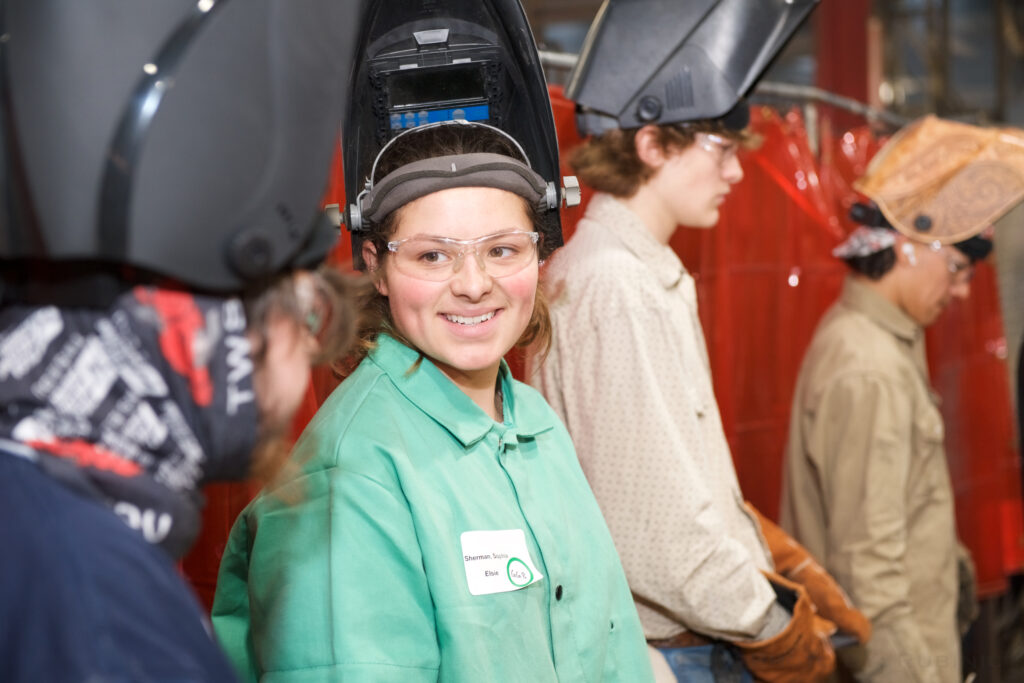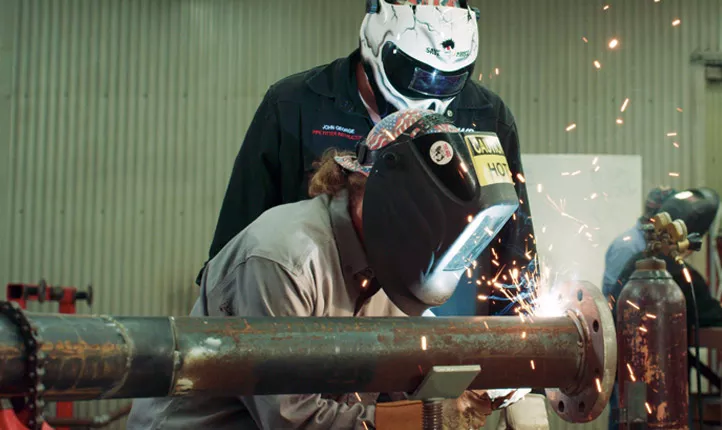The Changing Health Care Workforce
The Changing Health Care Workforce
The American health care system is an ever-changing space, and particularly so as our population is in the midst of massive change. As our population grows, so does the need for medical professionals to help treat them in their times of need—and to provide ongoing preventative care too.
While we have federal agencies to set standards of care and health-related guidelines, including the Centers for Disease Control and the Food and Drug Administration, there’s a whole host of privately-run companies, care facilities, research organizations, and more offering care for individuals and families nationwide.
It is essential that all the various components of our health care industry have a trained workforce in order to both stay up to date with regard to best practices and care standards—and to remain capable of efficiently treating patients.
But what does that look like, exactly, in 2021 and beyond?
The Workforce Today
Following the return of soldiers from World War II, the world was introduced to one of its biggest generations: the baby boomers. Two generations later, we have the millennials—another record-setting wave entering the workforce. Today, with thousands of baby boomers retiring every day, millennials are now the majority within the workforce.
This is putting pressure on the health care workforce from both directions: an aging population means an increased need for health care services, and a big wave of retirements means a decreasing workforce.
While Generation Z is already coming in behind millennials to fill in some of those gaps, nursing shortages and skills gaps in the health care field are poised to cause big problems in the future. We’re going to need to need more people who are trained to fill these essential health care roles to ensure everyone—of all ages—gets the care they need.
The Growth of Home Health Care
As the population continues to age, more and more seniors are fighting to be able to age in place—opting for home health services rather than moving into a retirement community, nursing home, or other long-term care facility. That means an increased need in nurses and care workers who travel between homes to provide daily, weekly, or as-needed services.
Home health care can range from assisting with activities of daily living (such as bathing, dressing, and eating), to supporting mobility and transferring in and out of bed, managing or administering medications, and tracking vital signs or other measurements.
It’s also becoming a more popular choice for younger patients who aren’t staying in the hospital as long as might have once been common, creating a need for additional support with surgical recovery, postpartum needs, or other health care they can’t provide for themselves.
The Advent of the Digital Doctor
Telehealth is another factor that has been a driving force of change in the health care system. Even though the concept has been around since the early 1960s to help those in urban areas receive medical attention, it’s obviously come a long way since then.
And especially in the last year. With the COVID-19 pandemic spreading worldwide, the value (and availability) of telehealth saw a huge spike. People still needed to see doctors and health care providers even during lockdowns, stay-at-home orders, and other virus-related regulations. Video and a stable internet connection made it possible for patients to be diagnosed and treated without leaving the comfort of their own homes. And that convenience is not likely to go away any time soon!
The Drive to Maintain Health
Today the health care system finds itself not only treating patients for typical ailments, but also intervening in global health crises, promoting prevention and long-term wellness, and supporting an increase in elective procedures.
When you read “elective procedures” you might think immediately of plastic surgery, but this can also include things like knee repairs, hip surgeries, or weight loss intervention: anything that can be scheduled as a non-emergent procedure, done to help the patient maintain their comfort of living. These types of health care innovations have also helped to extend our life expectancy.
The average life expectancy is continuously going up. People are living longer now and—even with preexisting conditions like obesity, liver disease, and diabetes also on the rise—a sense of holistic living is increasingly in demand. People want, more than ever, to make their health and overall well-being a priority.
The Need for Skilled Workers
All of this points to one thing: the need for skilled health care workers. Our country needs to have trained nurses, physician assistants, medical assistants, medical billing and coding specialists, technicians, phlebotomists, and more. Our health and wellness depend on it!
If you’re ready to pursue a new career path and want to join the dedicated health care workforce, the Imagine America Foundation has a robust database of schools who offer the hands-on training you need to get started. Find the right program for you so you can get started today!
Let’s Talk Picking the Right Trade School with Universal Technical Institute
Let’s Talk Picking the Right Trade School with Universal Technical Institute: SEASON 5, EPISODE 3 MORE FROM OUR EPISODE ON picking the right career school with universal technical institute Find Your Perfect Training Program At UTI, our mission is to prepare technicians for the careers…
Let’s Talk Women in Welding with Tulsa Welding School
Let’s Talk Women in Welding with Tulsa Welding School: SEASON 5, EPISODE 2 MORE FROM OUR EPISODE ON Women in welding WITH tulsa welding School Contact TWS — Houston, TX Click Here For A Virtual Tour! Location 243A Greens Rd. Houston, TX 77060 Contact tulsa…
Let’s Talk Aviation with Spartan College of Aeronautics and Technology
Let’s Talk Aviation with Spartan College of Aeronautics and Technology: SEASON 5, EPISODE 1 MORE FROM OUR EPISODE ON aviation CAREERS WITH SPARTAN COLLEGE OF AERONaUTICS AND TECHNOLOGY Contact Spartan College — Tulsa Main Campus Click Here For A Virtual Tour! Location 8820 East Pine…
Does your career college enrollment strategy include high school students? It should.
For decades, career college recruitment specialists have focused primarily on enrolling older adults: those with time in the workforce, with families, with less desire and fewer resources to commit to a traditional on-campus, four-year degree. Those adult learners aren’t going anywhere, thanks to employment market…
Making HERstory: Women in Welding Careers
The world is currently experiencing a shortage of qualified skilled welders as part of the greater “Skilled Trades Gap”. Filling this gap is necessary, as welding impacts many industries and supports the maintenance and growth of infrastructure. With the demand increase in welding career fields,…
Leave a Reply Cancel reply
- - ADVERTISEMENT - -
Categories
- Alumni Series (13)
- Automotive (57)
- Aviation (15)
- Business (14)
- Business & Arts (18)
- Career College Expositions (7)
- Career Development (96)
- CCC Blog (1)
- CCC Podcast (9)
- College Resource (90)
- College Showcase – Lincoln Tech (6)
- College Showcase – New Jersey (8)
- College Showcase – Pennco Tech (1)
- College Showcase – Universal Technical Institute (2)
- Continuing Education (154)
- Cosmetology (3)
- Counselor Resources (108)
- Criminal Justice (3)
- Dental Assistant (2)
- Education (109)
- Financial Literacy (17)
- Health Sciences (50)
- Heritage Series (3)
- High School Recruitment Series (4)
- Housing Series (10)
- HVAC (8)
- Imagine America Scholarships (12)
- Information Technology (17)
- Massage Therapy (5)
- Mechanical Sciences (109)
- Medical Assistant (12)
- Millennial Student Series (4)
- News (11)
- Nursing (22)
- Online education (13)
- Pandemic Proof Series (4)
- Personal Finance (17)
- Podcast (90)
- Research (11)
- Road Map Series (2)
- Scholarships (12)
- Social Media Series (4)
- Strata Tech (3)
- Student Success (29)
- Study Tips (3)
- Time Managment (1)
- Top 10 (10)
- Trucking (2)
- Uncategorized (14)
- Universal Technical Institute (19)
- Veteran Affairs (8)
- Welding (24)
- Women in Skilled Trades (3)
Tags
- - ADVERTISEMENT - -







